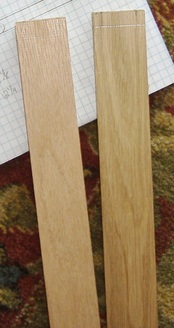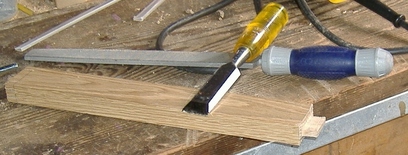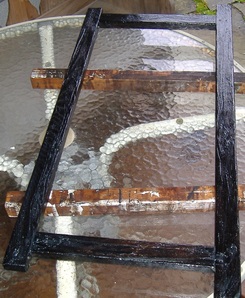In keeping with the tenets of arts and crafts movement, I build my frames using pegged, mortise and tenon joinery. This gives the frames added strength and stability, as well as an interesting appearance. As I do not have power in my shop, my tool use is limited to an electric drill, electric orbital sander, hand saws and chisels. The wood I normally use for my frames is milled red oak. I mainly use 1x2 red oak boards but on occasion use 1x3 and 1x4 oak lumber. The designs for my frames are loosely based on commercial arts and crafts style frames as well as on Japanese-style structures. On occasion I have even designed the frame first before determining the painted design to be enclosed within.
The frame itself is an integral component of the painting and it is to be considered part of the composition. In traditional Northern Northwest Coast Indian art composition, the black pigment commonly forms the primary formline outlining the composition. My blackened frames, using the Japanese shou-sugi-ban technique, constitutes the same for my paintings. They act to enclose the painting, forming a physical boundary around it. This concept is excellently articulated by Bill McLennan and Karen Duffek in their discussions about Kwakwaka'wakw carver and artist Doug Cranmer. (1)
Bill McLennan and Karen Duffek, The Transforming Image: Painted Arts of Northwest Coast First
Nations, ©2000, (pages 261-264).
These are the steps I typically use to construct my frames.
2.10 Burn the frame using a propane torch



















 RSS Feed
RSS Feed